In my world, grown men do not scream, yet this one was writhing in agony.
“Doc!” came his shout, as the soldier lay face down on the couch. “Peel it off quickly. Take away this pain!”
The soldier’s back told a story. He had been walking the mountains of South Wales for a fortnight during a military selection process. He had passed, but to protect his back from his rucksack, he had strapped adhesive dressing to his skin and left it for the duration. He had asked me to remove it, which was not simple. Through gaps in the strapping, I could see blisters poking through.
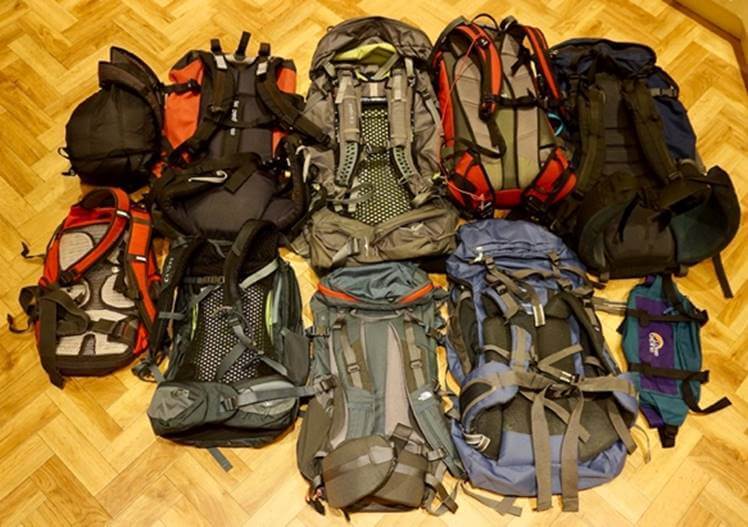 It took me 90 minutes to remove those dressings, a time when I learned more swear words than I knew existed. I had no better lesson about the importance of a well-fitted rucksack than those 90 minutes in South Wales.
It took me 90 minutes to remove those dressings, a time when I learned more swear words than I knew existed. I had no better lesson about the importance of a well-fitted rucksack than those 90 minutes in South Wales.
One look at my mountaineering storeroom and my indecision about rucksacks is clear. I have at least a dozen, of different designs and sizes. There are big ones, tiny ones, broken ones, and sufficient colours for a rainbow. There are some with pockets, others without, some lightweight, while plenty are heavy. There I am, an International Mountain Leader, and even I cannot decide about a rucksack. What chance is there for the occasional walker?
Before I buy a rucksack, my first question is “how large?” Any pack, of whatever size, becomes uncomfortable when it is over two-thirds full, so I always leave my rucksack slightly empty. Outdoor shops do not help, as the staff invariably ask what capacity of pack I am seeking. They never mention dimensions, as is commonplace when purchasing aircraft hand baggage.
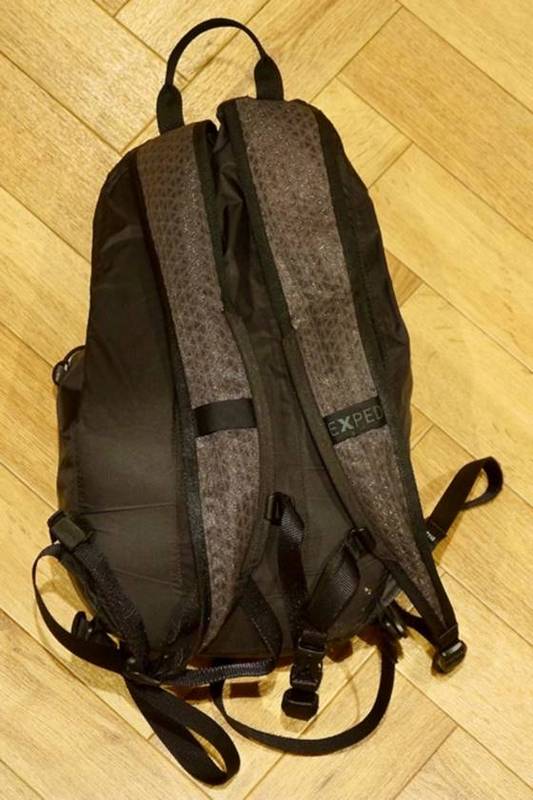 “Twenty litres? Thirty? We have a 70-litre pack over here,” said a sales assistant in France’s Chamonix the other week. She pointed towards a rucksack display covering the full length of one wall. I was seeking 30 litres.
“Twenty litres? Thirty? We have a 70-litre pack over here,” said a sales assistant in France’s Chamonix the other week. She pointed towards a rucksack display covering the full length of one wall. I was seeking 30 litres.
The fewer items I need for a walk, the smaller my rucksack can be. For two hours on the hill, I carry a 15-litre pack, but for a full day, I increase that to 30 litres. If I am away for longer, perhaps sleeping out, that rises to 50 litres. In winter, when I carry the kitchen sink, I can fill 70 litres without trouble. It is why I have so many rucksacks.
Fifteen-litre packs are generally comfortable, whatever their design, as I strap them tight to my back. There is no movement of the rucksack, whatever antics I perform. By 30 litres I am more cautious, and by 70 I am obsessive. I seek a pack that lies close to my back and a broad hip belt that can carry the weight of the rucksack on my hips, should my shoulders struggle. I hate hip belts, yet I love them, as they are utterly unforgiving. There is no better way of learning if a diet has been a success. As I grow older, slowly I must allow my hip belt to expand. One day I may have to leave it dangling.
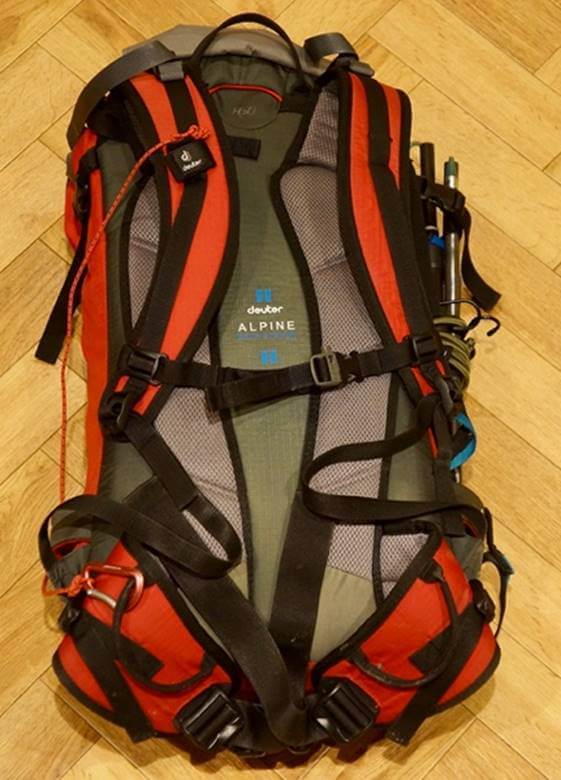 I also seek padded shoulder straps, with a chest strap connecting the two. I try to place 80% of the weight through my hips, and 20% through my shoulders. I like straps in each side of the rucksack, too, as they will hold my walking poles. The top pocket should be large, with one point of vertical entry. Accessing a top pocket horizontally allows vital items to spill out.
I also seek padded shoulder straps, with a chest strap connecting the two. I try to place 80% of the weight through my hips, and 20% through my shoulders. I like straps in each side of the rucksack, too, as they will hold my walking poles. The top pocket should be large, with one point of vertical entry. Accessing a top pocket horizontally allows vital items to spill out.
“What size?” asked the Chamonix assistant disinterestedly.
“Thirty litres,” I replied.
“Size, not capacity,” she said, clearly annoyed. “Large, medium or small?” She clutched a blue rucksack as she spoke. She was referring to the length of back.
I half stood on tiptoe, to appear taller than I was. “Thoughts?” I asked.
“Large,” she nodded, recognising male pride and started to adjust the rucksack. Packs can often be tweaked to fit different lengths of back. The end point should be a load resting comfortably on the hips, and shoulder straps perfectly contoured to the shoulders.
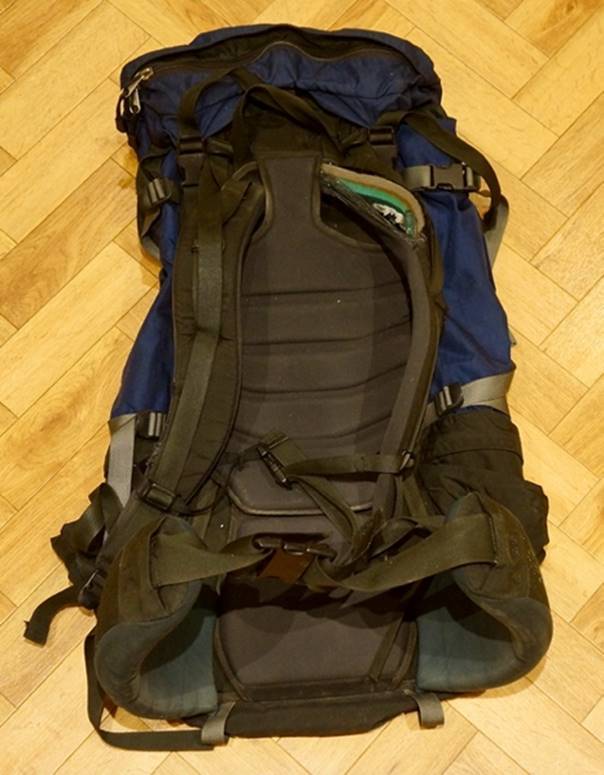 I then saw the assistant struggle. “Merde!” she declared, as she rummaged on the floor with the rucksack and glanced repeatedly at my back. She was clearly unhappy.
I then saw the assistant struggle. “Merde!” she declared, as she rummaged on the floor with the rucksack and glanced repeatedly at my back. She was clearly unhappy.
“I see the problem,” she continued. “You are not large, you are medium.” She emphasised the final word unsympathetically and my male self-esteem vapourised instantly. Oblivious to her cruelty, but with the dexterity of an artist, the assistant tightened several straps, and within moments my rucksack was ready.
Ten minutes later I walked from the shop sporting a perfectly fitted rucksack, but a male ego damaged irreparably.
Next stop was to fill the pack, but that is a different story.
If you want to buy a rucksack
Rucksacks are widely available so prepare to be confused. You will find them in many shapes and sizes, and they can also be called daypacks, backpacks, or knapsacks. To me, they are all rucksacks. Some are expensive, some are cheaper, and you do not always get what you pay for.
Some reputable brands include:
Osprey
Lowe Alpine
Arc’teryx
Macpac
Berghaus
North Face
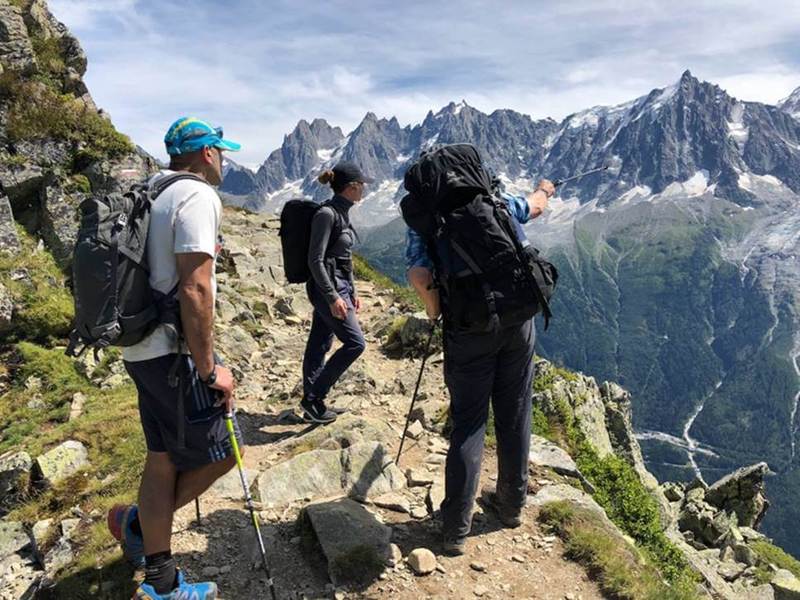 I use an Exped Cloudburst 15 for my short forays into the mountains. When empty it can roll up to tinier than tiny.
I use an Exped Cloudburst 15 for my short forays into the mountains. When empty it can roll up to tinier than tiny.
For day trips on UK hills, I carry a Deuter Guide Lite 32+. This has been updated as a Guide Lite 30+.
For very long distance, or for winter, I carry an Osprey Aether Plus 70.
My favourite shops for rucksacks are:
Cotswold Outdoor
Cunningham
Ellis Brigham
Seven steps to buying a rucksack
- Do your homework before you start and do not walk into a shop uninformed. You must get this right, as the pack may be yours for a long time.
- What capacity do you need? Remember, you may eventually require more than one rucksack.
- running: 10-25 litres
- hiking: 20-40 litres
- multi-day trips: 50-60 litres
- extended periods, especially winter: 60+ litres
- Do you need a gender-specific rucksack? Not always. Men and women have different anatomies, but plenty of rucksacks are good for both.
- The larger the rucksack, the more bells and whistles you will find. The smaller packs may only have limited room for adjustment.
For the larger packs, look for:
- hip belt (padded)
- adjustable back system
- chest strap
- shoulder straps (padded)
- side compression straps
- side stretch pocket
- rucksack lid with top pocket (ideally with vertical access) – even better, the lid may detach as a separate waist pack
- loops for walking poles or ice axe
- rain cover
- hydration pack – plenty of rucksacks have these, although I prefer an old-fashioned water bottle
- separate lower compartment with front opening – perfect for sleeping bags and instant-access items
- Fit the rucksack. Your endpoint should be a hip belt secured just above the hips, a pack that is closely applied to your back, and shoulder straps that precisely contour your shoulders. Adjust the pack until you achieve this. The commonest cause of unhappiness with a rucksack is that it does not fit. In the shop, the rucksack will be empty. On the hills the pack will be full. Remember that.
- First, put the rucksack on loosely. Next tighten the straps, but in this order:
- hip belt
- shoulder straps
- top stabiliser straps until they are angled at 45 degrees
- chest strap
- bottom stabiliser straps until they feel snug
Walk around the shop. You should feel at one with the pack. When you go left, it goes left. When you jump up and down, it does not separate from your back.
- When you are happy, buy the thing, find yourself a hill and start walking.
More information
How to fit your rucksack correctly (watch video)
Rucksack fitting guide
Rucksack and daysack buying guide
See also











